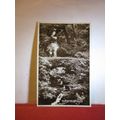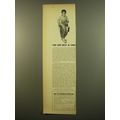Lowestoft, Suffolk - Dennis multiview inc lighthouse - postcard c.1960s
- Condition : Used
- Dispatch : 2 Days
- Brand : None
- ID# : 180477789
- Quantity : 1 item
- Views : 229
- Location : United Kingdom

- Seller : justthebook (+1704)
- Barcode : None
- Start : Sat 04 May 2019 10:49:55 (EDT)
- Close : Run Until Sold
- Remain : Run Until Sold
Checks/Cheques
 for 1 item(s) edit
for 1 item(s) edit
Shipping Calculator
More Listings from This Seller view all
Seller's Description
- Postcard
- Picture / Image: Lowestoft - The Lighthouse / Bellevie Gardens / Gardeners Cottage
- Publisher: Dennis
- Postally used: yes
- Stamp: 4d black pre-decimal Machin
- Postmark(s): Lowestoft 5 Oct 1969
- Sent to: Colton, Norfolk
- Notes / condition:
Please ask if you need any other information and I will do the best I can to answer.
Image may be low res for illustrative purposes - if you need a higher definition image then please contact me and I may be able to send one. No cards have been trimmed (unless stated).
------------------------------------------------
Postage & Packing:
Postage and packing charge should be showing for your location (contact if not sure).
No additional charges for more than one postcard. You can buy as many postcards from me as you like and you will just pay the fee above once. Please wait for combined invoice. (If buying postcards with other things such as books, please contact or wait for invoice before paying).
Payment Methods:
UK - PayPal, Cheque (from UK bank) or postal order
Outside UK: PayPal ONLY (unless otherwise stated) please. NO non-UK currency checks or money orders (sorry).
NOTE: All postcards are sent in brand new stiffened envelopes which I have bought for the task. These are specially made to protect postcards and you may be able to re-use them. In addition there are other costs to sending so the above charge is not just for the stamp!
I will give a full refund if you are not fully satisfied with the postcard.
----------------------------------------------
Text from the free encyclopedia WIKIPEDIA may appear below to give a little background information (internal links may not work) :
*************
Lowestoft (/ˈloʊ.əstɒft/, /ˈloʊstɒft/ or /ˈloʊstəf/) is a town in the English county of Suffolk.[2] The town is on the North Sea coast and is the most easterly settlement of the United Kingdom. It is 110 miles (177 km) north-east of London, 38 miles (61 km) north-east of Ipswich and 22 miles (35 km) south-east of Norwich. It is situated on the edge of The Broads system and is the major settlement within the district of Waveney with a population of 71,010 in 2011.
Some of the earliest evidence of settlement in Britain has been found in Lowestoft and the town has a long history. It is a port town which developed due to the fishing industry, and a traditional seaside resort. It has wide, sandy beaches, two piers and a number of other tourist attractions. Whilst its fisheries have declined, the development of oil and gas exploitation in the southern North Sea in the 1960s led to the development of the town, along with nearby Great Yarmouth, as a base for the industry. This role has since declined and the town has begun to develop as a centre of the renewable energy industry within the East of England.
Following the discovery of flint tools in the cliffs at Pakefield in south Lowestoft in 2005, the human habitation of the Lowestoft area can be traced back 700,000 years. This establishes Lowestoft as one of the earliest known sites for human habitation in Britain.[3]
The area was settled during the Neolithic, Bronze and Iron Ages and during the Roman and Saxon periods, with a Saxon cemetery producing a number of finds at Bloodmoor Hill in south Lowestoft.[4][5] The settlement's name is derived from the Viking personal name Hlothver and toft,[6] a Viking word for 'homestead'. The town's name has been spelled variously: Lothnwistoft, Lestoffe, Laistoe, Loystoft and Laystoft.
At the Domesday survey the village was known as Lothuwistoft and was relatively small with a population of around 16 households comprising, in 1086, three families, ten smallholders and three slaves.[7][8] The manor formed part of the king's holding within the Hundred of Lothingland and was worth about four geld in tax income.[8][9] Roger Bigod was the tenant in chief of the village.[9] The village of Akethorpe may have been located close to Lowestoft.[10]
In the Middle Ages Lowestoft became an increasingly important fishing town. The industry grew quickly and the town grew to challenge its neighbour Great Yarmouth.[11][12]The trade, particularly fishing for herring, continued to act as the town's main identity until the 20th century.
In June 1665 the Battle of Lowestoft, the first battle of the Second Anglo-Dutch War, took place 40 miles (64 km) off the coast of the town. The battle resulted in a significant victory for the English fleet over the Dutch.[13]
The Lowestoft Porcelain Factory, active from 1757 to 1802, was in production for longer than any English soft-paste porcelain manufacturer other than Royal Worcester and Royal Crown Derby, producing domestic wares such as pots, teapots and jugs.[11] The factory, built on the site of an existing pottery or brick kiln, was later used as a brewery and malt kiln. Most of its remaining buildings were demolished in 1955.
In the 19th century, the arrival of Sir Samuel Morton Peto brought about a change in Lowestoft's fortunes.[12] Railway contractor Peto was contracted by the Lowestoft Railway & Harbour Company to build a railway line between Lowestoft and Reedham. This stimulated the further development of the fishing industry and the Port of Lowestoft in general.[14] The development of the port boosted trade with the continent.[14] Peto's railway not only enabled the fishing industry to get its product to market, but assisted the development of other industries such as engineering and helped to establish Lowestoft as a flourishing seaside holiday resort.[12][14]
During World War I, Lowestoft was bombarded by the German Navy on 24 April 1916 in conjunction with the Easter Rising. The port was a significant naval base during the war, including for armed trawlers such as Ethel & Millie and Nelson which were used to combat German U-boat actions in the North Sea such as the action of 15th August 1917. In World War II, the town was heavily targeted for bombing by the Luftwaffe due to its engineering industry and role as a naval base.[15][16] It is sometimes claimed that it became one of the most heavily bombed towns per head of population in the UK.[15] The Royal Naval Patrol Service, formed primarily from trawlermen and fishermen from the Royal Naval Reserve, was mobilised at Lowestoft in August 1939. The service had its central depot HMS Europa, also known as Sparrow's Nest, in the town. Many Lowestoft fishermen served in the patrol service.[17]
Listing Information
| Listing Type | Gallery Listing |
| Listing ID# | 180477789 |
| Start Time | Sat 04 May 2019 10:49:55 (EDT) |
| Close Time | Run Until Sold |
| Starting Bid | Fixed Price (no bidding) |
| Item Condition | Used |
| Bids | 0 |
| Views | 229 |
| Dispatch Time | 2 Days |
| Quantity | 1 |
| Location | United Kingdom |
| Auto Extend | No |




















